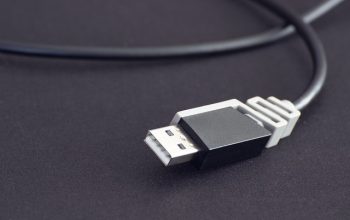When transitioning vehicle ownership through a title transfer, navigating the process requires careful attention to detail. This article demystifies the steps involved in the DMV title transfer requirements, offering clarity on the vehicle title transfer process. Whether you’re transferring a title within the state or from out-of-state, understanding the necessary forms, documentation, and fees is key to a seamless transition. From gathering the right documents to submitting your application and understanding the title transfer fees and costs, we’ll guide you through each critical phase. Learn how to effectively transfer a car title after a purchase and ensure compliance with state regulations for a hassle-free ownership change.
- Understanding the Vehicle Title Transfer Process
- Gathering Necessary Documents for Title Transfer
- Completing DMV Title Transfer Forms
- Submitting the Title Transfer Application and Fees
- Finalizing the Title Transfer with State Authorities
- Additional Considerations for Out-of-State Title Transfers
Understanding the Vehicle Title Transfer Process

When transferring a vehicle title, it is crucial to navigate the specific DMV title transfer requirements to ensure a seamless transition of ownership. The process commences with completing the necessary forms; typically, this involves submitting a formal application for a title transfer to your local Department of Motor Vehicles (DMV). This application will vary by state, so it is imperative to obtain the correct form for your jurisdiction. The vehicle title transfer process also mandates a thorough inspection to confirm the vehicle identification number (VIN) matches the one on the existing title.
Once the application and inspection are in order, you must provide proof of ownership, such as the previous title or bill of sale, along with proof of insurance and your driver’s license. Title transfer fees and costs are also an integral part of this process; these fees vary by state and may include registration fees, titling fees, and any applicable sales taxes or use taxes. It is essential to be aware of these costs beforehand to avoid any delays in the title transfer after a car purchase. Additionally, if the vehicle was registered out-of-state, extra steps are involved, such as providing an out-of-state title and potentially undergoing an emissions inspection. To facilitate this process, utilizing a DMV title transfer checklist can be invaluable, helping you to remain organized and compliant with all state-specific requirements. Ensure that you follow these steps meticulously to avoid any complications during the title transfer and maintain legal ownership of your vehicle.
Gathering Necessary Documents for Title Transfer

When embarking on the vehicle title transfer process following the purchase of a used car, one of the initial and most critical steps is gathering the necessary documents as stipulated by DMV title transfer requirements. This includes the completed application for title transfer, which varies by state but often follows a standard form. Alongside this form, you must provide proof of ownership, such as the previous title if available, or a bill of sale that includes the vehicle identification number (VIN). Additional documentation typically required is a valid government-issued photo ID to verify your identity and a proof of insurance for the newly acquired vehicle. Ensure that all documents are current and meet state-specific criteria to avoid delays in the process.
Another crucial aspect of the title transfer process is understanding and preparing for the title transfer fees and costs associated with the transaction. These may include a transfer tax, titling fee, registration fee, and any applicable sales taxes. The exact amounts can differ by state, so it’s advisable to check with your local DMV or online resources for accurate fee information beforehand. Completing the necessary paperwork and being aware of the financial obligations will facilitate a smooth and compliant title transfer after car purchase, ensuring that you are prepared to finalize the process efficiently.
Completing DMV Title Transfer Forms

When initiating the vehicle title transfer process, one of the first and most critical steps is to complete the necessary DMV title transfer forms accurately. These forms serve as a legal document that transfers the ownership of the vehicle from the previous owner to the new one. The exact form can vary depending on the state, but it typically involves filling out a transfer of title application, which requires personal information such as names, addresses, and signatures from both the seller and buyer. It’s imperative to provide precise details to avoid any delays or complications in the transfer. Once these DMV title transfer requirements are met, the next step is to submit them along with the appropriate title transfer fees and costs to the local Department of Motor Vehicles (DMV). These fees vary by state and sometimes by the type of vehicle being transferred. It’s essential to be aware of these costs ahead of time to ensure that the transaction proceeds without financial hiccups. The DMV will then process the application, perform a title search, and if all paperwork is in order, issue the new title in the buyer’s name. For those transferring a title after a car purchase, especially for used vehicles, adhering to these steps diligently is crucial for a seamless transition of ownership and compliance with state regulations. Out-of-state title transfers may have additional requirements, such as obtaining a temporary tag or providing proof of insurance from the new state. To navigate this process efficiently, it’s advisable to consult the DMV’s title transfer checklist and guidelines, which can be found on their official website or by contacting them directly. This will ensure that all necessary steps are taken in advance, streamlining the title transfer and avoiding potential legal issues.
Submitting the Title Transfer Application and Fees

When initiating the vehicle title transfer process, one of the first steps is submitting the Title Transfer Application to your local Department of Motor Vehicles (DMV). This application serves as a formal request to transfer ownership of the vehicle from the seller to the buyer. To facilitate this change, you must provide specific documentation, including proof of ownership such as the existing title or a bill of sale. Additionally, you are required to fulfill DMV title transfer requirements, which typically involve presenting valid photo identification and providing details about the vehicle for registration purposes. The application process may be completed online in some states, while others necessitate a paper-based submission.
Alongside the application, title transfer fees and costs must be settled. These fees vary by state and can include a range of charges, from transfer taxes to registration fees. It’s imperative to be aware of these Title Transfer after Car Purchase fees in advance to ensure you have the necessary funds. The DMV will provide a list of all applicable fees, which can often be paid online, by mail, or in person. To avoid any delays in the process, ensure that both the application and the required fees are submitted accurately and on time. Completing these steps correctly will set the stage for a successful transfer of the vehicle title and help you adhere to the DMV title transfer requirements without complications.
Finalizing the Title Transfer with State Authorities

When finalizing the vehicle title transfer process with state authorities, it is imperative to adhere strictly to the DMV title transfer requirements. The first step in this process is to complete the necessary forms specific to your state’s Department of Motor Vehicles (DMV). These forms often include a formal application for a certificate of title, which must be signed over from the previous owner to the new owner. It is crucial to obtain the correct form, as each state may have variations in its documentation needs. Once the forms are filled out, you must provide proof of ownership, such as the previous registration or a bill of sale. Additionally, you will need to submit a valid photo ID and prove your insurance coverage if required by your state. After submitting these documents, you must pay the title transfer fees and costs associated with the process. These fees typically cover the cost of processing the title transfer and may also include state sales tax based on the vehicle’s value. To transfer a car title after a purchase, especially when the vehicle is used, it is essential to ensure all parties sign the title where indicated, and the lienholder, if applicable, releases their claim. For out-of-state title transfers, additional steps such as obtaining a state-issued temporary tag may be necessary until the new title is received. It is advisable to check a DMV title transfer checklist or contact your local DMV for specific instructions and to avoid any delays in the process. By following these steps diligently, you can ensure a smooth and compliant vehicle title transfer process with state authorities.
Additional Considerations for Out-of-State Title Transfers

When transferring a vehicle title across state lines, additional steps are required to ensure compliance with both the old and new states’ regulations. Firstly, one must understand the interstate title transfer laws, which can vary significantly. It’s imperative to obtain the correct forms for an out-of-state title transfer from your new state’s Department of Motor Vehicles (DMV) or equivalent agency. These forms may differ from those used for in-state transfers. Additionally, you will need to provide proof of ownership, such as the current title, registration, and a bill of sale. The vehicle may also require an inspection to confirm its identity and condition.
The process of transferring a car title after purchasing it from another state involves notifying your new residence’s DMV promptly. This timely action is crucial because it can affect your vehicle registration validity and, consequently, your legal standing as the owner. Title transfer fees and costs may vary by state, so it’s advisable to check the exact amount beforehand. Some states might have additional taxes or title transfer fees that are not applicable in your previous state of residence. Ensure you gather all necessary documentation, including any emissions or safety certifications if required, to avoid delays in the transfer process. Completing an out-of-state title transfer successfully hinges on attention to detail and adherence to both sets of DMV title transfer requirements—your former state’s, for releasing the title, and your new state’s, for issuing it.
When navigating the vehicle title transfer process, adhering to the DMV title transfer requirements is paramount. This article has outlined each critical step, from document collection to final submission with state authorities, ensuring a seamless transition of vehicle ownership. Whether you’re handling an in-state or out-of-state title transfer, following these guidelines will help you comply with all necessary title transfer fees and costs, and complete the process efficiently after your car purchase. Remember that staying informed about the specific title transfer requirements and utilizing available resources like DMV checklists are key to a successful transaction. For a comprehensive understanding of how to transfer a car title, refer back to this guide, which serves as a valuable resource in the journey of vehicle ownership.



